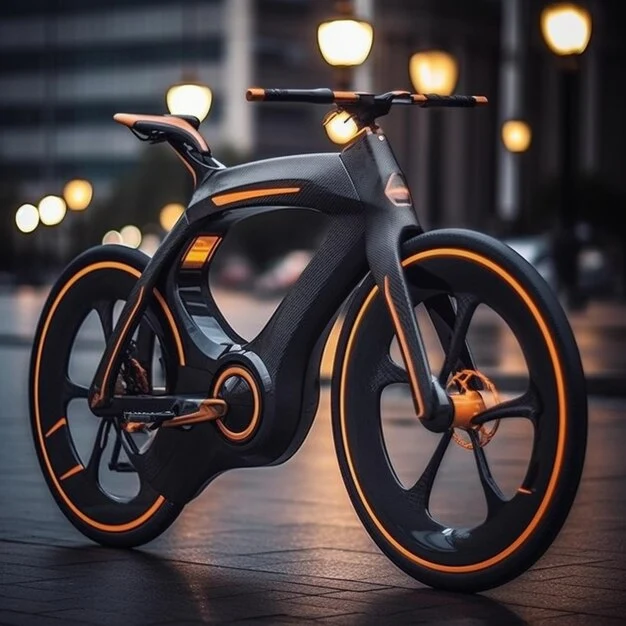Mavic X-Tend: The Uncertain Future Of A Revolutionary Ebike Motor?
Mavic is venturing into uncharted territory with its groundbreaking design for an e-bike motor. The development of the X-Tend motor has made significant progress, but its eventual launch and mass production remains uncertain.

Last week, multiple international cycling publications covered the news of Mavic’s innovative e-bike motor. Two aspects, in particular, captured my attention. First, the overwhelmingly positive reception across all articles, with several editors sharing their excitement after test rides.
They unanimously agreed that the X-Tend mid-motor could be a game-changer for ultra-light, high-performance bikes – ranging from e-road and e-gravel bikes to sleek urban bikes designed for commuting.
Seeking More Information
However, attempts to find further details on Mavic’s website have proven fruitless. The company remains tight-lipped about the X-Tend on its site and most of its social media profiles. The only clue available is on its YouTube channel, where a brief segment at the end of a video titled “Our DNA: Innovation,” posted on April 12, 2023, offers a glimpse of the motor’s internals.
Naturally, we were intrigued by this development. In pursuit of first-hand information, we contacted Mavic directly, requesting images, technical specifications, and more. The response from France informed us that no official press materials would be distributed. However, they provided a link to an extended video by the British online magazine “Road.cc” – which we had already discovered by then.
As a result, our understanding of Mavic’s X-Tend is primarily based on the research of fellow media outlets. This is a summary of the available knowledge we’ve gathered thus far.
Lengthy Development Process
You most likely know Mavic as an expert in wheel-related components, such as hubs and rims. Thus, the news of a drivetrain from the company may have caught you by surprise, as it did us. French magazine Vojo reveals that initial concepts for a motor emerged back in 2016. Two years later, the first patent applications related to the project were filed.

However, due to Mavic’s economic turbulence, including the sale by Amer Sports in 2019, bankruptcy proceedings in 2020, and the subsequent acquisition by the Bourrelier Group, the project faced delays. Now, the development has reached a stage where the company intentionally decided to share it with the public.
Uncertain Prospects
In early April, Mavic invited select magazines to Annecy in the French Alps for test rides. The goal was to gauge experienced editors’ opinions on the development progress while also drawing attention to the project.
In the Road.cc video, Maxime Brunand, Mavic’s head of product management, openly discusses the search for financial partners, as the company currently cannot undertake industrial-scale production on its own. As a result, market entry is not expected until 2025 or 2026 at the earliest.
Intentional Minimization
Swiss bicycle manufacturer BMC has been a long-time partner in Mavic’s X-Tend development. The media representatives conducted tests on BMC road bikes equipped with motor prototypes. The mid-mounted motor, particularly appealing to those primarily interested in road cycling, is far from a powerhouse. Its nominal torque of 39 Newton meters in continuous operation at 250 watts output is significantly lower than what units like TQ’s HPR50 or Fazua’s Ride 60 can achieve. However, the values can temporarily reach 50 Newton meters at 390 watts during power peaks.
Mavic considers the precise level of support offered by the X-Tend as its main advantage. One reason for this is the motor’s lightweight design, weighing only 1.2 kilograms. Riders seeking gentle assistance will find it enjoyable, with only three support levels planned for the drive: Eco, Sport, and Boost. Standard assistance in these modes is 30%, 60%, and 120% maximum, with individual adjustments available later on.

Embracing Release
Seamless Disengagement For riders who prioritize not being slowed down by the motor when exceeding 25 km/h or when the e-drive is off, the motor fully disengages in these situations. A mechanical clutch ensures zero friction, with the only resistance coming from the bottom bracket bearing, as emphasized by Mavic.
The motor’s design is unique in that it doesn’t require its own axle. Essentially, it’s a cylinder with a hole in the middle, through which an ordinary crank axle with Shimano’s Hollowtech standard passes.
A special arm on the drive side connects to the chainring, resembling a barb. Inside the motor is a connection to the freewheel, which, when disconnected, allows the axle and cranks to rotate like an oversized bottom bracket.
Additionally, the motor has a Q-factor of 146 millimeters, meaning any standard Shimano crank compatible with non-electric bikes can also be used with an e-bike. This should simplify integration for bike manufacturers, especially since the motor’s diameter is a mere 87 millimeters.
Fast-paced and Sturdy
The motor’s interior features a cycloidal gearbox, an eccentric type that enables significant gear reductions. As a result, the motor can operate at high speeds while still providing a suitable speed for cycling. For example, during a test ride, the Road.cc editor mentions a situation where his cadence is 60 while the motor is rotating 4,500 times.

Another advantage of cycloidal transmission is its simplicity, which typically benefits durability due to fewer components that can wear out. It doesn’t require additional stages like a planetary gearbox and has no gears, preventing shearing forces.
Anticipated Battery Resolution
The battery design appears nearly market-ready, with a fixed integration into the down tube to minimize the bike’s overall weight. With a 360-watt-hour capacity and a weight of 1.8 kilograms, it rivals TQ’s offering. An additional range extender is expected to provide an extra 180 watt-hours of capacity and weigh 1.2 kilograms.
The top tube-mounted control unit shown in the published videos has limited information available. Riding modes can be adjusted with plus and minus buttons, while a six-section display indicates the battery’s charge status.
E-Road Bikes – Any Other Applications?
Mavic envisions e-road bikes as the primary application for the mid-motor, with product manager Maxime Brunand also mentioning lightweight commuter bikes. The final bike weight could be around 12 kilograms, making it easy to carry into a flat. Test rides on BMC’s e-road bikes indicate this goal is achievable, as all weighed under 9.8 kilograms, with 3.2 kilograms attributed to the drive.

French magazine Vojo believes the X-Tend’s lower torque makes it more suitable for well-trained individuals who require limited electric assistance. The motor might struggle on steep climbs or under heavy loads, making it less ideal for e-gravel bikes and unsuitable for e-mountain bikes. However, counterexamples like the Thömus Lightrider E Ultimate and its Maxon Bikedrive Air with 40 Newton meters already exist.
What’s Left to Accomplish?
Remaining Development Various media sources and Mavic itself acknowledge the X-Tend is not fully developed. The power meter needs improvement, particularly on the large chainring, and there is no handlebar control unit or finalized app.
Vojo notes that motor decoupling is still slightly cumbersome, requiring a brief backward pedal to release the crank. Moreover, the motor briefly pushes when pedaling stops, causing the legs to move, which can be disconcerting at first.
The prototype’s motor noise is also considered too loud. On a positive note, the smooth crossing of the 25 km/h threshold and the natural riding feeling when the motor is off were praised as being ready for production.







